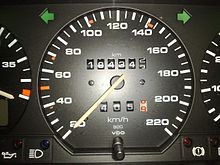킬로미터 매 시: 두 판 사이의 차이
잔글 봇: 분류:큰_토막글_문서 참고하여 토막글 틀 정리 (10,000바이트 이상) |
|||
| 40번째 줄: | 40번째 줄: | ||
* 1940: "KMPH"<ref>{{서적 인용|url=https://books.google.com/books?id=uA5LAAAAMAAJ |title=Electric Transportation |last=Thompson |first=Francis R. |year=1940 |page=165 }}</ref> |
* 1940: "KMPH"<ref>{{서적 인용|url=https://books.google.com/books?id=uA5LAAAAMAAJ |title=Electric Transportation |last=Thompson |first=Francis R. |year=1940 |page=165 }}</ref> |
||
--> |
--> |
||
약어에 대한 규칙을 지시할 중앙 권한이 없기 때문에, 다양한 출판사는 패션의 변화와 출판사의 이미지를 반영하여 대문자, 소문자, 마침표 등을 사용할지 여부를 결정하는 자체 규칙을 가지고 있다.<ref>{{cite book |title=Eats Shoots and Leaves |first=Lynne |last=Truss |publisher=Profile Books |year=2003 |pages=188–189 |isbn=1 86197 6127}}</ref> 예를 들어 [[로이터]]<ref>{{cite book |url=http://handbook.reuters.com/extensions/docs/pdf/handbookofjournalism.pdf |page=278 |title=Reuters Handbook of Journalism |date=April 2008 |publisher=[[로이터]]}}</ref>와 [[이코노미스트]]<ref>{{cite news |url=http://www.economist.com/style-guide/abbreviations |accessdate=9 December 2013 |title=Style Guide |publisher=[[이코노미스트]] |date=27 September 2011}}</ref>와 같은 [[통신사]]들은 "kph"를 요구한다. |
|||
호주의 비공식적인 사용에서는 km/h를 klick 또는 click으로 발음하고 쓰기도 한다.<ref>{{cite web |date=June 2012 |url=http://www.oed.com/view/Entry/241046 |title=klick |work=[[옥스포드 영어사전]] |accessdate=9 July 2012}}</ref> |
|||
=== 공식적으로 사용되는 다른 약자 === |
=== 공식적으로 사용되는 다른 약자 === |
||
2018년 4월 21일 (토) 12:03 판


킬로미터 매 시간 또는 시속 킬로미터(時速-, 영어: kilometre per hour)는 1시간 동안 운동한 킬로미터 수로 표현하는 속력(스칼라)과 속도(벡터)의 측정 단위이다. 국제 단위계에서 정한 기호는 km/h 또는 km·h−1 또는 km h−1이다. 가끔 영어 명칭인 'Kilometre per hour'의 약자로 kph 또는 KPH를 쓰기도 하지만 이는 표준이 아니다.[2][3] 세계적으로 자동차 속도계와 교통 표지에 가장 흔하게 사용되는 속력의 단위이다. 정의에 의하면 1 km/h의 속도로 운동하는 물체는 1시간 동안 1 킬로미터를 움직인다.
표기 역사
"킬로미터 매 시간"를 나타내는 여러 말들은 그 용어가 소개되었을 때부터 사용되었고, 그중 대다수는 현재에도 여전히 사용되고 있다. 예를 들어 영어사전에는 영어 약자로 "km/h", "kmph", "km/hr"가 나열되어 있다. 기호로 분류되는 SI 표기는 "km/h", "km h−1", "km·h−1"이다.
약자
"킬로미터 매 시간"의 약자는 19세기 말까지 영어에 등장하지 않았다. 길이의 단위인 킬로미터는 1810년에 처음으로 영어에 등장하였다.[4] 그리고 속력의 단위인 "킬로미터 매 시간"은 1866년에 미국에서 사용되었다.[5] "킬로미터 매 시간"은 오랫동안 약자로 쓰지 않다가 비슷한 시기에 다양한 약자가 생겼다.
약어에 대한 규칙을 지시할 중앙 권한이 없기 때문에, 다양한 출판사는 패션의 변화와 출판사의 이미지를 반영하여 대문자, 소문자, 마침표 등을 사용할지 여부를 결정하는 자체 규칙을 가지고 있다.[23] 예를 들어 로이터[24]와 이코노미스트[25]와 같은 통신사들은 "kph"를 요구한다. 호주의 비공식적인 사용에서는 km/h를 klick 또는 click으로 발음하고 쓰기도 한다.[26]
공식적으로 사용되는 다른 약자
변환
- 3.6 km/h ≡ 1 m/s, 속도의 SI 유도 단위
- 1 km/h ≈ 0.27778 m/s
- 1 km/h ≈ 0.62137 mph ≈ 0.91134 피트 매 초
- 1 노트 = 1.852 km/h (정확히)
각주
- ↑ “Maintenance Required Indicator” (PDF). 4 March 2016에 원본 문서 (PDF)에서 보존된 문서. 4 August 2011에 확인함.
- ↑ “Correct SI-metric usage”. 《www.us-metric.org》. 2018년 3월 20일에 확인함.
- ↑ http://ukma.org.uk/docs/ukma-style-guide.pdf
- ↑ “The Oxford English Dictionary”. 2012년 7월 13일에 확인함.
- ↑ Frazer, John F. (November 1866). 《Journal of the Franklin Institute of the State of Pennsylvania for the Promotion of the Mechanic Arts》 LII. Philadelphia: Franklin Institute. 314쪽.
- ↑ Harrington, Mark W.; Rotch, A. Lawrence; Herdman, W. J. (May 1889). 《American meteorological journal: A monthly review of meteorology, medical climatology and geography》 6. Meteorological Journal Company. 226쪽.
- ↑ “Power consumed on electric railways”. 《The Street Railway Journal》 11 (2): 116–117. February 1895.
- ↑ 《Bulletin – United States Geological Survey, Volumes 151–152》. USGS. 1898. ix쪽.
- ↑ Whipple, F. J. W. (1899). “The Stability of the Motion of a Bicycle”. 《The Quarterly Journal of Pure and Applied Mathematics》 30: 342.
- ↑ Launhardt, Wilhelm (1900). 《The Theory of the Trace: Being a Discussion of the Principles of Location》. Madras: Lawrence Asylum Press.
- ↑ Swinburne, J (July 1902). Saunders, Lawrence; Blundstone, S. R., 편집. “The Electric Problem of Railways”. 《The Railway Engineer》 23: 207.
- ↑ Figee, S. (1903). 《Observations Made at the Royal Magnetical and Meteorological Observatory at Batavia》 24. Government of Netherlands East India. 196쪽.
- ↑ Hobart, H. M. (1910). 《Electric Trains》. New York: D. Van Nostrand Company. xix쪽.
- ↑ Ball, Jack (August 1911). “Foreign Notes on Aviation”. 《Town & Country》: 26.
- ↑ Dodd, S. T. (January 1914). “A Review of Some European Electric Locomotive Designs”. 《General Electric Review》 17 (1): 1141.
- ↑ 가 나 “Data on Mixed Motor Fuels of Interest for American Export Trade”. 《The Automobile》 33 (15): 709. October 1915.
- ↑ “Tractive resistance tests with an electric motor truck”. 《Engineering and Contracting》 46 (25): 560. December 1916.
- ↑ al-Jawwīyah, Maṣlaḥat al-Arṣād (1921). 《Meteorological Report for the Year [1916?]》. Ministry of Public Works, Egypt. xvii쪽.
- ↑ Candee, A. H.; Lynde, L. E. (1922). “French Railway Begins Electrification Program”. 《Railway Electrical Engineer》 (Simmons Boardman) 13: 392.
- ↑ Blakemore, Thos. L. (1927). 《Pressure Airships》. Ronald Press. 230쪽.
- ↑ 《Aircraft Year Book》 15. Aerospace Industries Association of America, Manufacturers Aircraft Association, Aeronautical Chamber of Commerce of America. 1933. 391–393쪽.
- ↑ 《Bulletin》. Central Electric Railfans' Association. 1939. cxii쪽.
- ↑ Truss, Lynne (2003). 《Eats Shoots and Leaves》. Profile Books. 188–189쪽. ISBN 1 86197 6127.
- ↑ 《Reuters Handbook of Journalism》 (PDF). 로이터. April 2008. 278쪽.
- ↑ “Style Guide”. 이코노미스트. 2011년 9월 27일. 2013년 12월 9일에 확인함.
- ↑ “klick”. 《옥스포드 영어사전》. June 2012. 2012년 7월 9일에 확인함.
